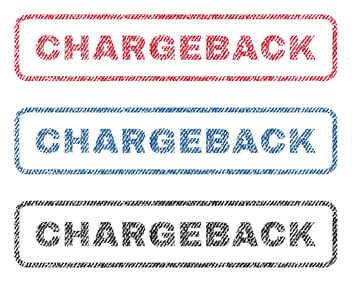Comprehensive Chargeback Management Guide - Part 7
Part 7: Compelling Evidence for Chargeback Responses
Now that you have learned about the chargeback process in Part 6, the final step is to learn what kind of evidence you should be sending to fight a chargeback to put together a compelling case.
In every Chargeback Management Guide from the card networks, it is stated that “compelling evidence” must be supplied at various points in the process. Just like how every network’s chargeback process is slightly different, every network has slightly different criteria for what makes evidence compelling enough to give a favorable ruling to a merchant. One thing common across all networks is that compelling evidence must include some form of documentation i.e. receipt, transaction history, contract, etc. It is not enough to simply state “Jimmy was a repeat customer.” You, as the merchant, must provide Jimmy’s transaction history from your records for anyone to accept this evidence. Make sure to consult the card network’s Chargeback Management Guidelines when you receive a chargeback, so you can verify what evidence is required and how it needs presented. Below are links to the major card networks’ Chargeback Management Guidelines.
MasterCard Chargeback Guidelines
American Express Chargeback Guidelines
Discover Chargeback Guidelines
Examples of Compelling Evidence
Compelling evidence can be any documentation you have stored about the customer’s disputed transaction that can help you prove that it was a legitimate transaction. Common examples of compelling evidence fall into two categories: Transaction/Delivery Information and Customer Information.
Transaction/Delivery Information:
- Signed receipt
- Delivery confirmation
- Signed contract or accepted terms and conditions
- Photograph
Customer Information:
- AVS match confirmation
- IP address used to make the transaction
- Proof of accessing the product/service after the transaction date
- Proof of repeat customer status
What Evidence is Relevant to My Chargeback?
Above are just some examples of many forms of compelling evidence. How do you know which evidence is necessary for your case? The answer to that question is in the Chargeback Management Guidelines for each card network. If you look up the Reason Code in the guidelines, there will be types of compelling evidence that should be provided. Note: This does not limit what you can send. You are free to include additional information, if it supports your claim and provides documentation.
How Much Evidence Should I Provide?
All of it. Fighting a chargeback is an uphill battle. The chargeback and arbitration processes heavily favor the customer, even with the major changes to Visa’s process that are supposed to give merchants a more level playing field. You, as the merchant, will need to provide every relevant piece of compelling evidence you can find. The one caveat is to ensure the evidence is relevant to this chargeback, as you don’t want to flood the reviewer with unnecessary information.
Questions to Ask Yourself
In helping decide if you have compelling evidence to provide, ask yourself the following questions:
- Is this person a repeat customer?
- Was CVV or 3D Secure used in the transaction?
- Did the customer make multiple transactions at the time of purchase?
- Has this person filed a chargeback previously?
- Do I have a signed receipt, contract, or accepted terms and conditions?
- Do we have any data on the customer?
Assistance Collecting and Providing Compelling Evidence
If you feel like you have too many chargebacks to handle effectively, or you cannot effectively respond to any chargebacks, there are many services available to help merchants with chargeback management. These services are often integrated with your customer management system in order to receive and organize your compelling evidence. There are usually varying service levels from self-service to completely vendor managed. If you think you need help responding to chargebacks, one of these services may be right for you.
Every Case is Different
It is important to remember that the tips discussed in this blog are just general guidelines. Every dispute is different and will require its own unique combination of evidence. Every card network has its own rules and regulations that must be followed, so make sure to read up on that network if you receive a chargeback through them. If you haven’t done so, read Parts 1 through 6 of this informative blog series to familiarize yourself with the entire chargeback process.
That concludes our blog series on chargeback management. Be sure to let us know in the comments below what you thought and provide any requests for future blog posts!

